20th October 2023
The Spokesmen Cycling Podcast
EPISODE 340: In conversation with Zack Hamm of Ride with GPS
SPONSOR: Tern Bicycles
HOST: Carlton Reid
GUEST: Zack Ham
TOPICS: I’ve featured folks from Bike Map and Cycle.Travel and now in this third episode about cycle navigation apps I talk with Zak Ham, co-founder of Ride with GPS
MACHINE TRANSCRIPT:
Carlton Reid 0:12
Welcome to Episode 340 of the spokesmen cycling podcast. This show was engineered on Friday 20th of October 2023.
David Bernstein 0:29
The Spokesmen cycling roundtable podcast is brought to you by Tern bicycles. The good people at Tern are committed to building bikes that are useful enough to ride every day and dependable enough to carry the people you love. In other words, they make the kind of bikes that they want to ride. Tern has e-bikes for every type of rider. Whether you’re commuting, taking your kids to school or even carrying another adult, visit www.ternbicycles.com. That’s t e r n bicycles.com to learn more.
Carlton Reid 1:04
I’ve featured folks from bikemap and cycle.travel. And now in this third episode about cycle navigation apps, I talk with Zack Ham, co founder of Ride with GPS. I’m Carlton Reid, and I recorded this chat remotely. Zack did have a great mic, but he didn’t have a pop filter. So there are a few slight plosives in the first half of the show. But we did cure that in the second half. Now tell me that you live in Eugene, but then go to work in Portland. Is that kind of right?
Zack Ham 1:43
Oh, no, that would be that’s they’re about 100 miles apart. I lived in Eugene for about nine years. That’s where I met my wife. And that’s where we started the company. But I moved to Portland, about 10 years ago. So I’m in Portland now.
Carlton Reid 1:56
So I noticed there was there was there was definitely two centres. You know, the original route was in Eugene. But clearly you’ve kind of said My question was going to be really is the fact that it’s now in Portland or even then in Portland? Is that the reason there is a bicycle app? Because Portland clearly is is in certainly in North American terms. chocker with bicycles.
Zack Ham 2:24
You know, it’s it’s funny, that’s a question that we get all the time for, like, oh, Portland must be a great, great place to have an app for recycling because there’s so many cyclists there. But the truth is, my partner and I both grew up in the Portland area. It’s just kind of coincidental. And most, you know, we have a great audience of people that use our stuff and in the Portland area, but it’s not it’s like maybe in the top six cities in the US for us. So it’s really not central to the business.
Carlton Reid 2:52
Interesting. And your bit your partner that is Cullen Cullen
Zack Ham 2:55
King. Yes, exactly. And he he went to college in Corvallis, which is about 30 miles north of Eugene. So we actually started we started riding motorcycles together in high school. And so the very, very early days of, of the product, we were just programmers, we like to working on software projects. That was really the impetus. And we did our first testing on motorcycles and we still have a contingent of, you know, dual sport and adventure riders who swear by our product, you know, 15 years later, and some of them have no idea that it’s that it’s really focused on cycling.
Carlton Reid 3:31
Because I’m a motorcyclist cyclist, you can have very similar routing needs.
Zack Ham 3:37
Sure, it’s not about going from A to B, oftentimes, you end where you start, you’re just trying to go out on you know, scenic, beautiful roads where there’s not a lot of traffic. On the motorcycle, you don’t really care if you’re going up or down hills, but you like you like a curvy road. And the only reason to make a curvy road is typically because you’re going up or down hills. So it ends up being very similar from the routing front.
Carlton Reid 4:00
Hmm. So 2007 was when you and these two motorcyclists fresh out, were you fresh out of college? Are you still doing it in college?
Zack Ham 4:10
Oh, no, I was a I was a sophomore in college at the time. And actually, we we started it in two late 2006. So yeah, quite quite a while back.
Carlton Reid 4:18
So that’s the same age as this podcast.
Zack Ham 4:20
So you know how you know it feels?
Carlton Reid 4:24
Yes, that’s how long your product has been out there because this this podcast is a dinosaur in podcast terms. So 2006 2007 ish, when it comes out. So why are you doing what what’s the what’s the landscape here? Literally the kind of digital landscape and what why are you creating this? Why is there nothing like this out there?
Zack Ham 4:46
You know, 2006 and seven was just a different time on the internet. And perhaps I was just a different age. So I was, you know, young and naive and had that kind of ignorant confidence that you have then which is See, which is really a powerful tool because I had a boss who was a coach of a women’s cycling team and Eugene and he had been trying to get me into cycling and telling me how cool it is, I should stop riding my motorcycle and just, you know, get some exercise. And I finally took him up on the offer one day went out on a pretty tough 30 mile ride, which for me was was crazy. And, you know, I came back and I’m like, wow, that was incredible. But the thing that really stuck with me was he took this GPS unit, he had a Garmin 705 At the time, took it off his bike, plugged it into his computer, and showed me the data that he had. And it was like, there was a line on a map show he had a barometric altimeter, he had a power metre at the time, which was pretty advanced, you know, speed and cadence sensor, heart rate strap, he had all the technology at the time. And I saw the software and I’m like, this software could be so much better, and what other sport in the world other than like Formula One racing collects this much data, like cyclists are a strange breed. And so as a programmer who was contemplating getting into riding, I was like, I have to do this because as a programmer, it’s interesting, I didn’t even care about bikes. At first, I just was really interested in all the data people were collecting. So that was really the spark. And then looking at the competitive landscape. I mean, at the time there was map, my fitness, there’s Map My ride, and then there was also a company called motion based that eventually got acquired by Garmin and turned into Garmin Connect. And looking at those, you know, being that confident sophomore in college, I just shrugged my shoulders and was like, I could build something better. Like, you know, it was that was how the Internet was back then there was just less money and everything things were less developed. And, you know, a high school or a college student could really look at the landscape and say, I could do that.
Carlton Reid 6:45
Now I’ve seen the side to research this kind of I went on on bikeportland. So that’s where I got the articles, original one from way back when Jonathan Maus has done a review, and then the later one where he’s talking about, you know, you’ve been going for 15 years. So I’ve got some other kind of biographical details. Sure. And that’s how I knew about cologne on there, all that kind of stuff. So on on on bikeportland. It was basically talking about where you’ve come from. And that was where my question was coming from. Also, by the way for for, for cycling. Could you if you’re in Portland, that’s why and I would definitely like to circle back on give us your your top cities. But on that on a coverage that Jonathan did have you, I think it’s you are saying you basically you bootstrapped this. And you always bootstrapped it all the way through in that you’re self funded. And tell me how many members of staff you have now?
Zack Ham 7:47
Yeah, we’re just about 35 people at the moment. So that’s
Carlton Reid 7:50
a lot of people to be relying on your subscriptions.
Zack Ham 7:55
Yeah. And we’re hiring right now. So yeah, we’ve been, you know, we started the company just, I don’t know that. I don’t know, maybe, maybe, Colin and I put in a couple 100 bucks or something for hosting. I don’t even remember at this point. But, uh, yeah, we started in 2009. We asked people if, you know, hey, you know, back then you’d see this more often. But we’re like, Oh, if you like what we’re doing, you’re welcome to donate to our PayPal, you know, buy us a cup of coffee, whatever. And, you know, very quickly, we’re getting about 1000 US dollars a month. And it just kind of struck us, okay, this, this is starting to look like a business. And before that it was just a hobby, you know, we worked on it together quite often. And, and then in 2011, I was able to go full time on it. And from then it was just this sort of cycle of, oh, okay, we made some more money. Should we hire somebody? Should we, you know, buy another server, and just kind of rinse and repeat. And then, you know, coming into where we’re at today, you know, we’re still customer funded, still profitable. And, yeah, we have about 35 people and hopefully bring on a handful more towards the end of this year and into next year. And I think right now, it’s kind of the most exciting time in the business yet we’re, we have a really, really strong team. You know, everybody’s into bikes, everybody’s passionate about the space, people have chosen us as an employer. For very personal reasons. It’s not just the job. And everybody kind of buys into our mission, that we’re focused on bikes, that we want people to get on a better ride, and just kind of staying really, really close to this niche that we’re in. And instead of trying to go broad and you know, be everything for everyone.
Carlton Reid 9:39
So when you when you got those first 1000 bucks with via PayPal, at that point, you must have thought, well, we need two levels here. We need a level that anybody can can use and then we need the subscription level. And is that when you start adding crazy features, or is it always Oh, wait, you need to add this feature? And then it’s like, no, hang on, we’ve got to stop, we’ve got to stop this is going to pay our wages here.
Zack Ham 10:07
Yeah, it’s, you know, it actually took us a while to launch the paid account, because we just had made everything free up to that point. And, you know, for us, it was really, we were never really focused on the business, or the sales, or the conversion funnel, or all the kinds of traditional software as a service, stuff that, that you should be worried about, frankly, for us, we just had all these people using our site, and then they would email us and be like, Hey, I have a Garmin 605, and I got this error. And that would be kind of our dopamine hit, we’d be like, yes, we’re going to solve this problem for this person. And then they’d come back and say, I want an awesome bike ride. Thanks. And that was really what drove us and still drives us today. And then in terms of the money side, you know, we we identified some features that we’re speculative, these kind of this advanced analysis studio feature, and a few other a few other convenience things. And we’re like, Yeah, let’s, let’s launch a paid account. And we’ll we’ll have like, you know, syncing with the there’s a wait an app plus weight scale, and it’s like, this is obscure enough, we’ll make this paid. And since then, we’ve gotten a little bit more refined. But we still like to have a product that’s really useful if you don’t pay us. Because ultimately, the people, whether you pay us or not, you’re you’re part of our community, you’re contributing back. You know, if you go on a ride, then you could submit a review of the route that you did that’s going to help somebody else. Or you can seek your rides and help build out our global heat map and help people understand what roads are safe and popular to ride on. So it’s not just about collecting money from people, there’s also opportunity for you to contribute value back just by participating.
Carlton Reid 11:49
So tell me, you’ve kind of like touched on a few bits of paid for too. But tell me what what do you if that if I go on via the app, or I’m presuming on online as well, on the on the on the browser based version as well? What do I get as a as a fully paid up member? And how much? And Are there levels?
Zack Ham 12:10
Yes. So there’s, there’s two levels that would apply to you as a consumer. And then we also have, we have a programme for organisations like bike clubs, event operators, tour operators, that’s, that’s a separate side of the business. But on the consumer side, we have two levels. And we’ve tried to simplify this. But basically, if all you need or want are the features of the mobile app, which for us is our mobile route planner, mobile navigation, offline maps, live tracking, and then a few other a few other bits. But those are the main ones. It’s really all about offline maps and navigation. That’s what people that really seems to drive purchases on the mobile app, then that 60 US dollars a year, you know, kind of in the middle and comparable to some of the other competitors. And then if you also want to unlock the website, which is advanced route planning, some advanced analysis tools, but ultimately, it’s really about that, that route planner on the web, then it’s $80 a year. And that gives you the mobile app and the web. So so it’s for people who just care about the mobile app, 60 bucks for people that want everything and really want to open up their computer and it kind of use the Photoshop of Route planners as we like to think of it, then it’s that $80 level and we call that premium.
Carlton Reid 13:33
Okay, now, that way, I I’m gonna open up my phone to see where the app is on on my phone. And you can hear my my dog in the background, there probably is a ride that I did in in Sardinia 2002. In fact, it’s only just come out in the Daily Mail that I put out, I think I sent you the link so I put ride with GPS as a mention in that piece. That came out yesterday. But that was basically a tour company in this case, Turismo of Italy had paid for a group subscription, and then all the members of that, of that that particular bike tour, could then be fed information, be fed all the routes and have everything on their smartphone, for that particular bike tour. So that’s how I’ve got it on my my phone already. Is from that that tour? So how much does it cost? A bike tour company, a club on organisation, what are they paying? What are they getting?
Zack Ham 14:42
You know, so that’s, that’s a part of the business that’s that I’ve always been really proud of and happy with. When we launched our what we call our organisations programme. Originally it was just the Club account back in 2015. We were trying to find we didn’t want to charge nothing for it because we knew that If we charged nothing, then the incentives wouldn’t be aligned, we wouldn’t want to provide as much support or we wouldn’t be able to justify it. But we also didn’t want to charge very much, because we wanted it to be utilised as much as possible. Because the ultimate goal, this is what we do, instead of marketing, instead of spending money on banner ads, or what have you, or paying for Google AdWords, we take the money that we might spend there, and we invest it into this organisations programme, so that somebody like you ends up with our app on on their phone, and, you know, some percentage of you afterwards would be like, Oh, that was kind of cool, that navigation worked well. And hopefully, we can let you understand you can also use this in your personal life. So it’s this sort of like marketing channel. But really, it’s this partnership with organisations, so they pay us the base price is $250 a year, which, again, for the value that they get is pretty inexpensive. And so as a result, you know, we have nearly 2000 organisations in that programme, you know, 1000 of which are bike clubs. And, you know, we just have tools that nobody else wants to build. It’s a, it’s frankly, kind of an an unsexy area on the software front, especially if you’re a consumer focused company. Because, you know, what’s the bike club need, like we have, we have bike clubs that have 5000 routes, and, you know, you need, you basically need to build like a spreadsheet tool for them to manage this bulk operations, tags, all this kind of boring b2b stuff that I think a consumer focused company really doesn’t want to build. And so we’ve kind of tackled those problems. And as a result, if you go on tour with a company like turismo, then they’re gonna say, hey, please instal this driver GPS app. And you’ll have this really slick experience where you can scan a QR code, you get into this branded portal for them, all you see are the routes you’re going to do on your tour, you get to use navigation. And then in the end, we say, Hey, you can also use this app in your personal life.
Carlton Reid 16:56
Yeah. So that’s why I’ve got it on there now is I’m going to, we’re going to cut for a break. But before we do that, I do want to come back to you. And actually, I want to put your microphone out because there’s a few pops. So hopefully in the ad break, we can actually sort that out so there’s not so many pops afterwards. So we’ll be right back.
David Bernstein 17:14
This podcast is brought to you by Tern bicycles. The good people at Tern understand that while a large cargo bike can carry oodles of stuff, many of us prefer something a little more manageable. That’s why they’ve come up with the HSD e-cargobike for folks with big aspirations to go car free, delivered in a compact size, with its rear shock, 280 kilos, and a combined hauling capacity of 180 kilos. The robust new HSD is stable and easy to manoeuvre, even when under load. And with its Bosch eBIKE SYSTEM tested and certified to meet the highest UL standards for electric and fire safety you’ll be able to share many worryfree adventures with a loved one whether it’s your kiddo or Nan. Visit www.ternbicycles. That’s te r n turn bicycles.com to learn more
Carlton Reid 18:14
Thanks, David and we are back with with Zack Zack ham of ride with GPS and we had a wee chat there. And we’ve hopefully got Peters pickled peppers won’t be such a problem going forward. I didn’t want to stop Zach initially, because it wasn’t all the time. And it was just you know, the little thing and most of the audio was absolutely fantastic. But it’s just the audio pops. Anyway, I think we’ve sorted that. So Zack, when I go back, I when you came in, when we started the recording, you were telling me that Portland and this was surprising. This is very surprising. But maybe this is indicative of something so so let’s let’s dig into that. Portland was not your city, was it your sixth highest? It’s not your it’s not the biggest or not even the second or third biggest use where your heat map is in bringing up routes routes in the US. So a How come? Is that a surprise? Or is that like indicative because when you read Jonathan Maus’ articles, you realise that, you know Portland, Oregon was fantastic maybe 1015 years ago, and has since gone downhill in many respects since then. So is it indicative of that? Or would you think it’d always have been at that level?
Zack Ham 19:37
No, that’s kind of how it’s been the whole time. And, you know, it’s not it’s not really an indictment of Portland as a great place for cycling because on a percentage basis, it’s it’s a very high performing city for us. So in terms of how you know of our registered users, how many of them are active and engaged how many of them have found enough value to pay us Portland perform EMS very, very well. But just as a population centre, it’s simply not as big, as you know, Seattle, Boston, the New York area, the LA area. So it’s really that perspective of, you know, if we’re going to be thinking of regional centres to, to be kind of focused on have on our radar to be engaging with sort of the influential clubs and organisations in those areas, then, you know, Portland, yes, it’s important, it’s on the list. It’s where we live as well, which makes it especially kind of near and dear to our hearts. But, you know, it’s not one of the biggest cities in the country. It’s really a mid sized city. And we have many of those in the US. And in terms of you know, how it’s changed over time. It’s obviously been in Portland, we, because of all the news, especially since, you know, since since COVID, since 2020, the reputation of Portland has really gone downhill. You know, I don’t know if you ever were exposed over there to the show Portlandia. But that kind of input? Oh, yeah, I kind of put Portland on the map as being this quirky, weird, fun, safe place. And, and the reality is, has always been a little bit different from that. And so, you know, people that live here, I think, are now a little bit on the defensive, because, you know, they go to Thanksgiving dinner, to the east coast to go back with their family. And all they have to do is kind of fend off this barrage of, you know, I hear Portland’s on fire, it’s terrible. And it’s like, yeah, Portland has a lot of problems in there. And they’re very serious. A lot of the West Coast cities do. But at its core, you know, I can still ride my bike to work, we still have our bike infrastructure. And for the most part, it’s, it’s a wonderful time over here. It’s just, yeah, it could it seen better days. And I hope that, you know, the city gets its act together and sorts sorts things out in a humane and fair manner. But Portland still a great place,
Carlton Reid 21:53
basically, that it’s the demographics size, rather than the number of hardcore cyclists. So you just got to get more people in a bigger place. Be sure that’s, that’s where your top cities then?
Zack Ham 22:07
Yeah, so I mean, Portland punches above its weight class, I think it’s another minute to think of okay, but yeah, for us, you know, Seattle, Boston, you know, the LA area, the New York area, those are all those are all really big, it’s kind of even the Chicago area, although, as we head into winter, that’ll that’ll go down quite a bit. So it’s kind of the obvious places just by population, as long as people ride bikes there, then in the US, we’re really well known, we’re really strong, we have a presence. In most places, we’re kind of the default, like the expected app to be used by event organisers or by bike clubs. And consequently, we’ve kind of gotten our way into the cycling community throughout the US. And then, you know, when you go outside of the US, you have different experiences, right? In some some countries, or some areas, were really not that popular. And then in some areas, there’s these pockets where everybody’s using us. So that’s kind of the the emerging story for for our opportunity, when
Carlton Reid 23:11
you pay that 60 bucks, or 80 bucks, if you want, like the getting behind the scenes on the on the browser based version. And you’re getting all the bells and whistles, you’ve got to be pretty hardcore. To be going into that, that kind of depth. So can you see which of your users are writing so much, or updating, you know, their app so much? And you classify them as hardcore? Probably athletes? Maybe if they’re writing that much? And how many are more recreational say they’ll just do something like at the weekend? And do you classify? Do do you have a? I mean, I’m asking you a question here that maybe you wouldn’t want to answer just how much of the data you do dig into. But if it’s if it’s if it’s anonymized data, then it’s it surely isn’t a problem? are you digging into the data to find out who your users is? What is my question? I guess.
Zack Ham 24:10
Yes. And, and no, like, honestly, the question that you just asked, I think a lot of this information would be incredibly valuable to us to tell you what routes you might want to ride. So for us on a product basis, being able to give you your next great bike ride, or at the very least make sure that your next ride is better, and you ride a little more often. That’s really our job. And we would be able to do that much better, the more that we know about your riding. So I certainly have no qualms about thinking in terms of like wanting to know more about you as a cyclist, because I think that’s in your best interest. But in terms of you know, what data we’re collecting and how we’re sort of partitioning our users. It’s really not as sophisticated as it It would be, frankly, because the, for the most part, for the most of the company’s history, we’ve really been focused on talking to our users, we have like a really, really well known and renowned customer support team. We’ve invested in that side of the business, especially since we worked with all these organisations, we’re on the phone a lot. We answer many, many, many support tickets very, very quickly, and very knowledgeably. And so we bring all of that qualitative information to bear when we’re developing the product. And then, of course, we watch usage of the product, you know, in a broad fashion to say, okay, you know, how much are these features being used versus other features, just to calibrate our intuition. But, you know, really to answer your question, I wish we knew a lot more than we do. And we’re going to kind of move in a direction where it’s not just serving our interests, so that we can be behind the scenes and tinkering and kind of managing all of your data, it’s really going to be more of this cooperative and upfront thing, where we’re asking you what type of riding Do you want to do, because it’s not just about your behaviour that we’re observing, it’s also about your aspiration, because maybe you really want to get into gravel riding. But you haven’t done it before, because you didn’t have anybody to do it with and you don’t know what a safe and reasonable route is. And so we should probably be giving you recommendations about your aspirations and not just your past.
Carlton Reid 26:20
And you do have a turn by turn, turn by turn is in the paid version. Yeah. Is in the subscriber level?
Zack Ham 26:29
Yes, correct. Yeah, you get voice voice turn by turn navigation. And it’s funny this started out because we got so frustrated with Garmin units. And we and we love Garmin, we love we love their units. Same with Wahoo, they make incredible head unit. So I have nothing bad to say about any of them. But at least a long time ago, with a Garmin unit, you would set a route out and it would be a loop. And maybe it was like a lollipop. So the the first section you would come back on. And frequently, it would just shortcut the whole thing. And then it would say route complete. And you’d have to go and restart navigation, we thought that was so silly. It’s like my goal isn’t to get to the finish line, it’s to do the whole route. And that really was one of the things that inspired our navigation. So, you know, for us, we make sure if you go and say I wanted to go and do for loops of this section of the route, we make sure you do four loops of it. But if you do three loops, and you cut off early, then we recognise that and we’ll move you forward on the route. But it’s it’s a very specific and nuanced take on navigation, where we recognise that people actually want to do the route that they planned, even if there are shorter and more efficient ways to get to the finish line.
Carlton Reid 27:44
And then that’s an athlete user.
Zack Ham 27:48
We don’t Yeah, we don’t think in terms of I guess I didn’t come my partner and I didn’t come from the competitive cycling world. And so for us, I don’t know, we don’t think of ourselves as athletes. And yeah, there’s certainly members of the team and members of our audience that do consider themselves athletes. So I’m not disparaging that, but no, I mean, I can go out and ride 100 miles, but I don’t think of myself as an athlete. For me, I just, I think bikes are something special, you know, you can combine really cool endurance, exercise performance, all that stuff with a really great social setting, enjoy nature, have a little adventure, get a little adrenaline rush on the downhill. And like that whole experience is really what we’re focused on. So the people that use our product, kind of our best, our favourite user, the person who is really, really digging into all the details, and the nooks and crannies and using it every day are really more on the adventurous side where they appreciate novelty, you know, they don’t want to just go a lot of athletes might go and do the same loop every weekend or, you know, the same training ride. And frankly, for them, maybe maybe training peaks or Strava is a better a better use of of their of their time or their money because if they’d already know exactly where they’re going, we don’t necessarily have a lot of differentiating things to offer them. But for us, if you want to go in a new ride, a more interesting ride, you want to mix it up, you want to travel somewhere and go on to the best possible ride with the time you have. That’s really our sweet spot.
Carlton Reid 29:16
So if I land in Paris, for instance, I get up one of the train stations, and I’ve got to get across town. And I don’t know my way about am I going to be using a rider’s GPS Am I gonna be firing up your app on my phone?
Zack Ham 29:32
Yeah, absolutely. And I And I’ve done exactly that. Yeah, that’s a that’s a great use of it. I use it every time I travel and and when I’m travelling with my wife, my goal is not to you know she’ll my own product to my significant other like that’s not my objective. My objective is to make sure that she still likes bikes afterwards. And I always do rely on our product and then I come back and I report a bug or two and, and frankly I rave to the team about like how awesome it was that I was able to go there and ride like a lot Local, with very minimal effort, go on this wonderful bike ride that I just couldn’t have done without a piece of software like ours.
Carlton Reid 30:07
So rod like a local. So that’s good. So you basically this the heat map shows you that, or the curators ride shows you that just this is where a local would ride, they probably wouldn’t go this route, even though that looks like a sensible route on a map. So you bring up on a map and you think well, that’s that’s probably the way to go. And then you kind of refer to yours like, well, actually, most people are going that route. Is that Is that how you describe it, that’s how people are using it.
Zack Ham 30:35
That’s, that’s one piece of it. And the heat map, I feel that the heat map is, is a tool you can use to kind of get a baseline, you know, hey, I’m not writing, I’m not writing like I don’t know anything. But you know, the most popular roads aren’t necessarily the way to go all the time, because you might have a commuting corridor, where it’s a fine place to ride. But perhaps if you’re doing a recreational ride, you really don’t want to be on there, you want to be on this less popular section that goes out of town and does this nice big loop. Maybe it’s more scenic, maybe there’s a hill and the commuting one doesn’t have a hill, there’s a lot of reasons why you don’t just want to follow the most heat on a heat map. And for us, you know, we don’t think that, you know, we can be like the smart people behind the scenes with the algorithms in the software, and just come into your community and say these are the best rides like we’ve never believed that we know more than people on the ground, especially working with the most knowledgeable route planners in an area all these people that run bike clubs or run bike tours. So for us, we want to build software to support those people and build build these advocates that have the authority locally. So that they can go out and say, Hey, these are the best routes, this is the best way to string these things together. So instead of here’s just another map, you know, sure it’s a heat map, but it’s just another map, choose your own adventure, you can come and use our tools to look at a map and say, Oh, here’s, if I pick any of these five routes, like I’m good, this is going to be a great time on a bike, it’ll be a varied experience, you know, I’m going to start at a coffee shop and see a nice local cycling friendly business, get out of town, have a nice viewpoint have a nice challenging climb, or whatever. And you can select your filters on do I want, you know, all paved or some unpaved do I want a lot of climbing do I want to be short or long. And our goal is to just give you instead of 10,000 routes in a heat map of a million options, we want to give you just a few options. So that you have a little bit of variation, but ultimately, like just like a friend would do. So they say Hey, this is the route you want to do. You know, I’m not gonna give you 25 ideas. I’m just gonna tell you go do this one.
Carlton Reid 32:54
Here and then and you’re maybe it’s very different in America. I mean, it’s only in the UK when we begin to audit seven maps. But they were never kept as actually as up to date as the map I’m going to mention which is Open Street Map, which which powered literally powered loads and loads of navigation businesses was open street map that important to you to begin with. I mean, how important was it? I’m right in thinking it’s always been generally more important in Europe than in North America. It’s certainly been more more updated in Europe than in in North America like in Germany, you down to you know, streetlamps, you know, individual street lamps are on OpenStreetMap. Just crazy amounts of detail from from techy people just volunteering. So how important back in the day was OpenStreetMap to you? And how important is it to you now?
Zack Ham 33:49
Yeah, originally OpenStreetMap just wasn’t, like you said it just wasn’t there in in the US. We were, you know, on the sidelines, cheering it on. And we’re really excited about it. We love. We love those kinds of open source style projects. And yeah, we’re, we’re big fans of OpenStreetMap since the very, very early days, even though it didn’t make for the best product for us. And so we’ve always believed in just using the best tool for the job at the time and being open to changing that. So when we first had the route planner out, JavaScript was too slow and web browser. So it was flash based for the members of your audience that remember, you know, flash on the web, it’s gone now. But so we’ve gone through many, you know, technology cycles, and also these these cycles of data where originally it was Google Maps was kind of the only provider that could do the job. And then as soon as OpenStreetMap started to become useful, one of the first things that we did with it was, I don’t know if you recall, this was also a long time ago, but with the old Garmin units, you could put in a SD card, a map card to get base maps and you would buy a Garmin unit and it would not have base maps and It was a really complicated process to get the OpenStreetMaps database onto one of these map cards. And so we had some users that were asking us about this, and we started a little side business out of it, I think we had we sold, I don’t know, 1000s of these map cards from our website so that Garmin users could have base maps based on open street maps. So that was kind of our first experience with open street maps as a business. And since then, we’ve built out, you know, a bunch of servers, we host a lot of infrastructure that’s based on open street maps, we have, you know, a vector map server, and we have a server to go, you can type in like the name of a city or an address and go look it up against our servers there. And we have routing servers that are based on OpenStreetMaps with other data so that you can, you know, get your point A to point B routing. So so we, you know, we love OpenStreetMaps, and we rely on it more and more and more as time goes on.
Carlton Reid 35:53
And because one of the reason I was asking that is because OpenStreetMaps has kind of got like, sometimes if you’re using open cycle map, the version of open street map that’s for bikes, there’s a surface level, there’s a surface layer, which you can you can then you can then work out, you know, which part of your your route is is, is gravel, which is dirt, which is which is paved, etc, etc. So, you’ve got a in 2021, I see here in your, your linear progress was when you added surface types, so surface types, are they submitted by users by members? Or is that some that you’re pulling it in? You’re pulling in the data from elsewhere?
Zack Ham 36:37
We’re pulling that in from open street maps. And, you know, there’s, it’s, it’s complicated, though, because the way that things are tagged in the OpenStreetMap database, you know, in one area, something might be tagged in a way that you have to infer, okay, if if it has this tag, but that tag that it’s actually paved in the state of California, but if it has these other two tags, then well, it’s then it’s unpaved, or what have you. So, you know, similar to your conversation with with, with Richard from cycle travel, you know, the way that he was talking about how they have country by country, routing, and everything based on just different usages of the OpenStreetMap database that vary by region. You know, that’s kind of exactly how we think about surface type is just trying to understand how people are using open street maps in their community. And doing our best to simplify that down, you know, you know, in Germany, where they have every street lamp, they also differentiate between, you know, gravel, or brick, or dirt, or single track or these, you know, a grassy path. And it’s up to us to, to narrow that down to what cyclists on our platform really care about, which is, look, is it paved, or is it unpaved? And sometimes answering that question is a little a little more complicated than just this binary, yes or no.
Carlton Reid 38:07
So tell me what other maps do you have, we tell everybody what you can actually choose from when you when you go in, you can say, right, for this particular route, you might want this particular map, you know, there’s this there are times when you did want different maps for different things. That’s me, I maybe that’s just me, what maps have you got?
Zack Ham 38:26
No, it’s not not just you, we’ve always supported, you know, the maps that people are asking for. So we have our own. Our own vector map that we’ve put a lot of time into, we actually recently recently launched a new version of it, and we call it RGB GPS cycle. And, and it’s quite nice, actually, it brings all the cycling infrastructure out, you know, lets people see peaks kind of de emphasises the motorways or the the highways that people might not want to ride on. So it’s a great cycling map. And that’s our default. But then we have the suite of maps from Google their map view, their satellite view, a lot of people really like switching, you know, between our map and the Google satellite view, because it’s yeah, it’s a really good satellite view. And if you’re doing adventurer writing, you can if we don’t have surface type data, you can double check with satellite and say, oh, you know, that doesn’t look very paved. And then we also have some of the OSM once we have the OSM the standard OSM map, the OSM cycle map, OSM outdoor map that comes from Thunder forest, it’s a really great company that makes some really nice map styles. We have a topo map from Esri, which is a lot of people like because it’s really crisp and clean and has a lot of detail, especially for people that are going kind of into the back country. They appreciate those contour lines on the on the top of a map and extra information that’s on there. And then we also have maps from the US Geological Survey, which you know, aren’t as relevant over where you’re at, but in the US These are to some people sort of like how you view your Ordnance Survey maps, at least when it comes to when you get out of the populated areas. They’re they’ve been around for a long time, you know, they’re built by the government, there’s a lot of great detail in those. And we have some old scans of the raster maps that provide, you know, a certain level of detail. And then we also have their newer vector topo maps, which you know, provide a different level of detail and represented in a different way.
Carlton Reid 40:28
And they, you can toggle through them, if you’re a paid member, or if you’re that’s, that’s with the no pay subscription.
Zack Ham 40:36
Now we let we let everyone do that. And when it comes to our paid or unpaid options in the in the route planner, it’s really, you don’t really hit, you don’t run into limits, or we require a period of count until you do some of the more advanced stuff. So for us, kind of like layers in Photoshop, you can have multiple routes on the map at the same time, we call it multi route editing. And that’s a paid feature. But if you just want to go click, click, click, make yourself a nice route, save it and go ride it, you can do all that for free. Hmm. See,
Carlton Reid 41:11
I’m a historian, right? And the early days of motoring was very much like this, you’d go for pleasure rides, this is this what people are doing, they’re going for pleasure bicycle ride. And that’s what you used to do in a car used to go for pleasure. And motorcar rides. And you can imagine, you know, in the very late 1890s, certainly the early 1900s. You know, if this app was available, then the early motorists would have been all over this, but you’re not going to get a motor and maybe a motorcyclist, yes. But you’re not going to get a motorist doing this. So this, your your kind of core customers are basically doing this, they’re very geeky, probably. And they’re doing this for pleasure. Whereas if you’re downloading, you know, a sat nav app, as a motorist, you’re going to be using that for probably not actually that pleasurable in many times to drive places, whereas you’re offering a product that’s actually a very pleasurable pleasurable thing to be doing.
Zack Ham 42:11
We’d like to think so I mean, that’s, that’s why we all well, not all of us all the time. But that’s why I like to think we all come to work with a smile on our faces, because that’s when we deal with, when we deal with a customer, or anybody that’s using our product, you know, most of the time, they’re really doing something that’s cool. And we’re helping enable that, we, you know, it’s so great when we hear from people who will write in and say, you know, I just did this trans America route, and I don’t know how I would have done it without you guys, you know, without your without your software without the data that I was able to get from, from ride with GPS. So that’s, that’s why we’re doing what we’re doing. You know, we think bikes are a special thing, where you get outside, which is more and more rare these days, you know, you are with people like real human beings in real life, which we also think is more rare and a special thing, and you get some exercise, you get used to move through space, it’s a very human activity. So we hope that people, you know, we hope people cycle for for, you know, to get to work and to go get their groceries and do all that we’re big supporters of cycling in general, but really our, our focus is people who go out and want to do this recreationally, go on an adventure, have fun with friends, and, and just don’t want to have a don’t want to have an undesirable experience. You know, a lot of people do want to go out and take risks and go on that adventure where they really don’t know exactly what’s going to be around the next corner. And they love our software, too. But you all know that we’re really being successful when somebody who’s very risk averse, who really doesn’t want to get into trouble, who wants to know exactly what they’re going to do goes on a ride that they’ve never been on before, where nobody there with knows more than they do. And it’s because our software kind of gives them that confidence gives them that comfort that they can go and do something new, and know that they’re not going to run into trouble.
Carlton Reid 44:06
Hmm. Night Before we were talking about how you’re bootstrapped, and how you had 30 Plus members of staff and you’ve been profitable since since the time you you’re taking fees, basically. But then you’ve also just recently, I mean, we’re talking September is my my story here. You’ve got $3 million from an undisclosed strategic investor. So those are always things where you ask people and they won’t tell you because if it’s not on the news story, they people don’t want to tell you which is fine. Unless you do want to tell me but I My question is going to be what you’re going to do with that money. What what what features what what expansion? is that money going to be funding?
Zack Ham 44:53
You know, that’s, yeah, it’s it’s one of those funny things when I was bringing this news back to back to our team You know, because our roots are in r&b and bootstrapped, we’ve always been very proud of that. And so thinking about like, Well, I haven’t changed, my partner hasn’t changed. And we’re bringing on this new partner. So, you know, what’s, what does that what does that mean? Like, why would we have done this? Like? How do people kind of understand this? The truth is, we’ve been working with this guy since 2020. His name’s Jason Eken. Roth, he’s like a super fan of our product. He has been a paid user since 2016. And, and he’s been kind of a mentor, frankly, to me for the past three years, and he’s been wanting to get involved in the business. He’s had a successful software startup in the past. Right now, passion is his cycling, it has been for many years. He’s based in Europe, which is a market we know, we don’t know enough about, and we’re very interested in. So he’s just been like a great friend, mentor, somebody who gives a lot of professional advice. And we’ve been trying to figure out a way for him to have a seat around the table to welcome him in as a partner, so that he can spend more time with us and really help us do what we’re already doing better. And so we figured out a way to do that, where he could be a minority partner. But if you haven’t been there since the beginning, and you’re not working a full time job and getting equity, how do you become a partner, you have to buy your way in. And so, you know, it really isn’t about the money, it’s about the partner. And so it’s like, okay, well, what are you going to do with the money? Nothing, right now, we’re, we’re profitable, we were planning on hiring 10 more people, you know, toward the end of this year and early next year, before we planned on welcoming him on, and we don’t want to just blow the company up with a bunch of new staff. So we’re really not going to change our plan at this point. So maybe an opportunity will come up, and we’ll be we’ll have a little more comfort to take advantage of that, you know, have a little more courage. But that opportunity hasn’t come up yet. So we’ll see. I mean, we have the future, I think is really opportunistic. For us, there’s a lot of things we can do. So it’ll be nice to have a little more courage, but really, it’s about the guidance of, of him as an individual.
Carlton Reid 47:06
Presumably, the meetings when it’s behind around the table are like zoom meetings, if he’s in Europe,
Zack Ham 47:12
he was actually down here last week, and I’m gonna go, I’m gonna go out there and visit him here pretty soon as well. So we’ll be getting together in person, pretty frequently. And And again, that’s, you know, it wouldn’t probably wouldn’t make a whole lot of sense for that to be happening if he wasn’t an actual partner in the business. So it’s gonna be, it’s gonna be a lot of fun, I think it’s gonna be really exciting.
Carlton Reid 47:34
So how big if you got brought down a European investor? How big? Are you outside of the US? I mean, how much of a focus Have you had else, you know, outside of the US and previously made? Will that change?
Zack Ham 47:47
Well, are yes, the majority of our customer base has always been based in the US. And, you know, we actually have a quite quite a large contingent of, of users in the UK. And then other other English speaking areas, you know, so we have quite a few, quite a few users in Australia, for example, good contingent in South Africa, and whatnot, but you know, our, our penetration into like France, Italy, Germany, you know, even even the Netherlands and whatnot, is, it could be a lot better, that’s for sure. And we have quite a few users over there just by number, but in terms of compared to the opportunity, it could be a lot more. And so our focus mostly over there has been with our tour operator partners. And so really, the, honestly, a lot of the people that we’ve supported in Europe, are Americans who are going overseas on these on these week long bike tours. And so we get a lot of usage over there. It’s just usage from people who are travelling, who are having this curated experience. So that’s been most of our experience in that market. Whereas in the US, we’re very integrated into like the local cycling scene by virtue of these partnerships with bike clubs and people that are running events.
Carlton Reid 49:05
Yeah, that that saw dinner event I mentioned was was one American, know those two brands, but they were both journalists. On the on the trips, everybody else was Americans and America, it’s an Italian company. But as far as I can see, most of our clientele are, are Americans. I guess that’s why they’ve used ride with GPS, because that’s, that’s more familiar to Americans. Now, obviously, I want to end now but uh, normally I would ask people, you know, what’s the URL? Where can we get more information? But it’s kind of obvious what your URL URL is. And like, I’m sure absolutely your Instagrams the same, everything is probably exactly the same as to Yes. We really don’t have to discuss what the URL might be. Now that How about you personally? Are you on social media in your own right, or is it always going to be you’re a corporate person and that’s That’s you’ll only find Zack as as Robert GPS
Zack Ham 50:03
No, I’m, I’m you know, I don’t post much on anything but but I’m certainly out there, you know, people are welcome to email me directly that’s za CK at Robert gps.com I always welcome and I see email or you know, you can follow me on Instagram, maybe I’ll post something and I think my most recent videos of me skateboarding so you can see that I don’t just ride a bike. And that’s Zach cam as well. So yeah, I’m on LinkedIn, I’m kind of I probably have a Twitter or x account or whatever they’re calling it now that I that I don’t use but I’m reachable through all those places.
Carlton Reid 50:38
Thanks to Zach Ham there and thanks to you for listening to Episode 340 of the spokesman podcast brought to you in association with Tern bicycles, show notes and more can be found at the-spokesman.com. The next episode features an upbeat chat with Carla Francome who talks candidly about her knockers. That is, her social media critics, of course, That show will be out early next week. But meanwhile, get out there and ride
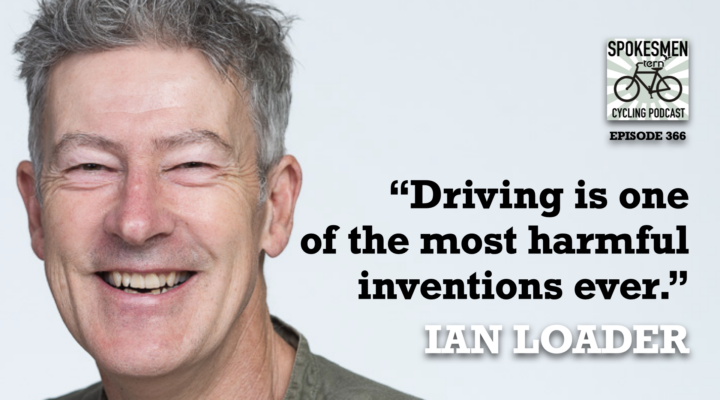
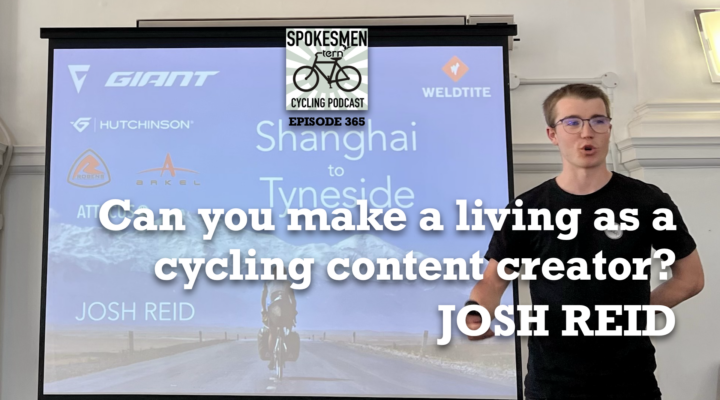
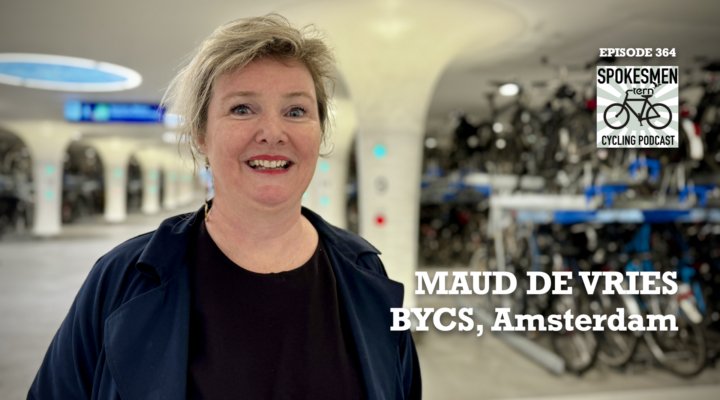
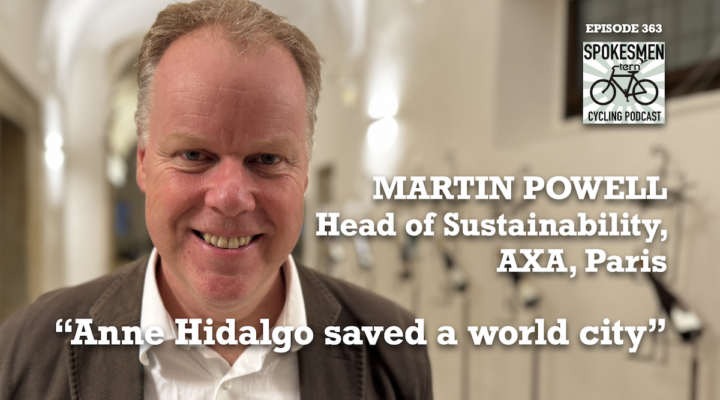
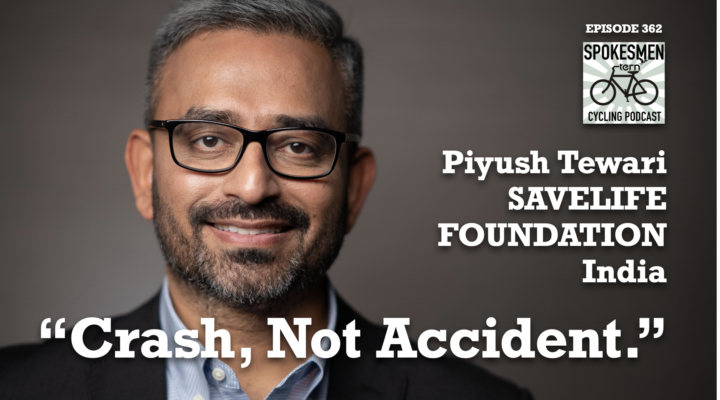
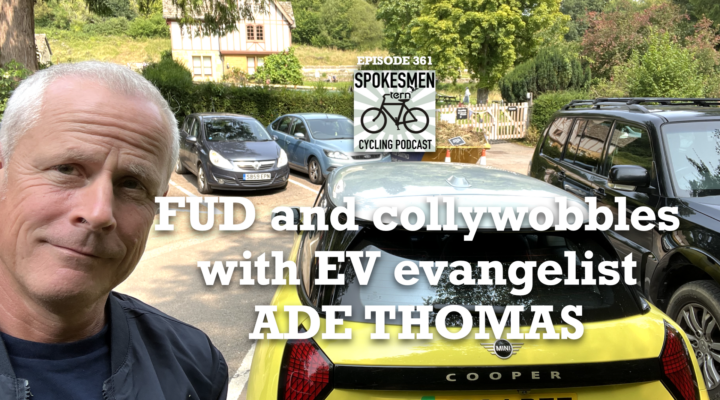
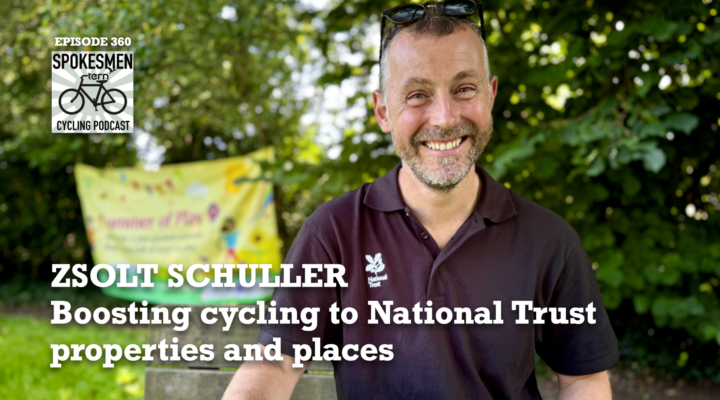
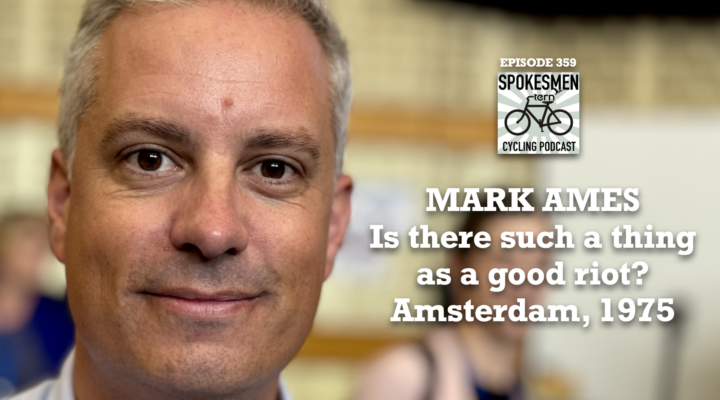
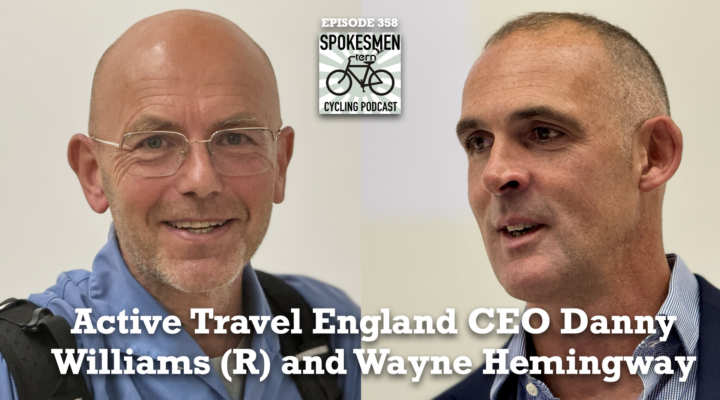
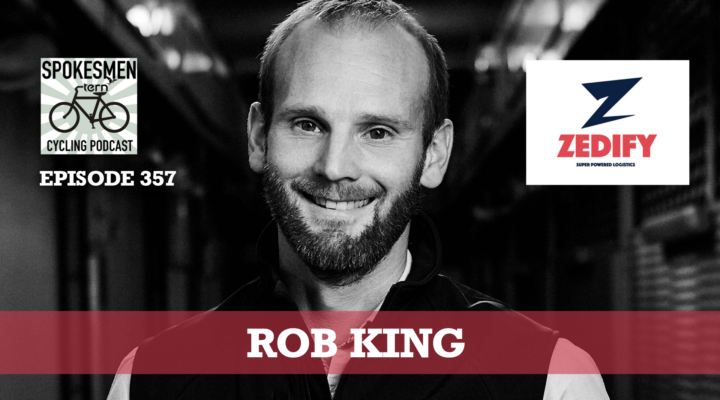
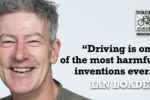
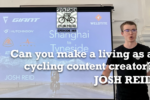

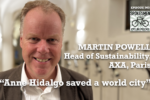
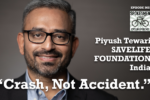

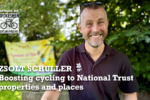
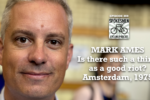
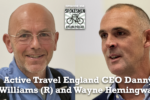
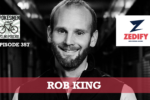
fyi this one didn’t work to play in google podcasts at all, and died repeatedly at 2 minutes in on your player on this page. downloading the file has worked…
wish i had remotely relevant skills for their open jobs – i do very much like the website/app!
Hi Corinne — thanks for letting us know. This might be just a problem with Google Podcasts because it’s not (so far) a problem in Apple Podcasts. And the player on the page also played fine. Temporary glitch?
Hi Corinne — others reported issues and, at first, I couldn’t work out what could be wrong but then, upon further digging, I found an extra “0” on the file name used for uploading service Feedr. This would have affected some players, but not direct-from-the-site listens or downloads. So, now fixed. Thanks for letting me know. Carlton